
UME (Universal Machine Emulator) combines the features of MAME and MESS into a single multi-purpose emulator. The project represents a natural course of development for the emulators which already share large amounts of code and is part of an ongoing effort to unify development efforts and provide a single emulation platform for users and developers alike.
As an end user this means that the software provided here is not only capable of emulating arcade machines like the baseline versions of MAME, but in addition can emulate a large number of home computers and consoles from across the world using the very same code, developed by the very same team of developers.
What’s New
You can read the various whatsnew files on mamedev.org
From MAME, From MESS
UME binaries (Windows)
0.149 Windows binaries (32-bit and 64-bit) (Self Extracting 7-zip) (all MAME / MESS tools included, both 32-bit and 64-bit versions in tool32/tools64)
The source is identical to that found on mamedev.org (SVN revision SVN 23625 / 0.149)
Non-UME binaries (Windows)
In addition to providing the UME binaries I’ve also included a package with the individual legacy MAME/MESS executables here, personally I prefer the everything under one exe UME solution but I’ve noticed it’s not always easy to find binaries of the regular u builds with them not being offered from the official site so this is my attempt to address that.
Latest U release binaries for UME, as well as MAME & MESS can also always be found on the page linked in the box on the left
These binaries are coming from Mamedev (me) so are as official as you’re going to get for a u update.
Please note, if you want to compile a linux build you should check the source out from the official SVN instead of downloading it, there is an issue with some source files and line-endings whereby the linux python scripts don’t agree with the Windows style line endings you get on the downloaded source. Details of the SVN server are still on mamedev.org
Points of Interest
The arcade side of the UME 0.149 bit (or the ‘MAME’ bit if you prefer to think of things that way) was shaping up to be fairly uneventful outside of some clone additions until a last minute discovery changed all that.
A rare Italian developed game called ‘Attack Force’ running on Space Invaders-like hardware showed up a few days before on the ArcadeItalia Forums. At first it looked like it might be a bad dump, but hap quickly noticed it had a slight line-swap encryption. It’s by a company called ‘E.G.S. or Electronic Games Systems’ and is a good example of an obscure CPU-based game that could easily have been lost to time already! The gameplay is simple, you the army of enemy units will move from the top of the screen to the bottom one at a time taking cover behind the sandbag bunkers and if any unit reaches you then the game is over. Sound still isn’t emulated (I don’t know if it should use Invaders style effects, or has it’s own circuits) Still a big thanks goes to Piero Andreini for identifying and dumping this thing!



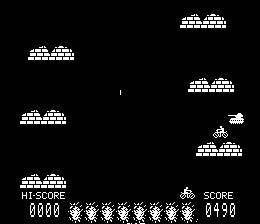
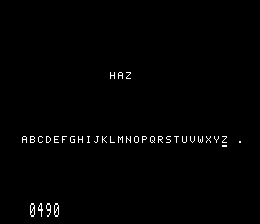
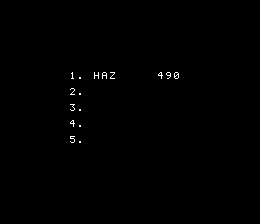
I mentioned clones, and there are lots of them, from the Spanish users of the AUMAP forums. Some are more interesting than others, but here’s a bit of a rundown of them.
Ave Fenix is of course, a Spanish release of Phoenix, and one of the most well known ones over there. It’s a full Spanish translation of the game.
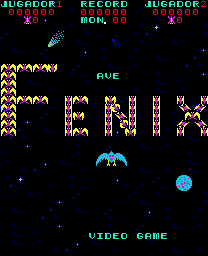
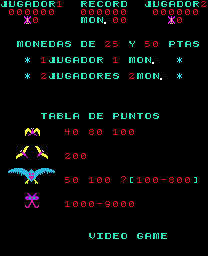

Battle Zone is a curious one. It’s another version of ‘May Day’ which in turn seems to be roughly based off some kind of Defender clone (it still has Williams copyright messages in the ROM) but is clearly a different evolution of the bootleg / hack. This one doesn’t show the ‘May Day’ text when you use the bomb, but does show a ‘Video Game’ copyright (common for Spanish bootlegs, likely the same company as Electro Game) whereas the May Day sets have no copyright displayed at all and are thought to be by Hoei. This possibly raises more questions about the origins of this game than it answers!
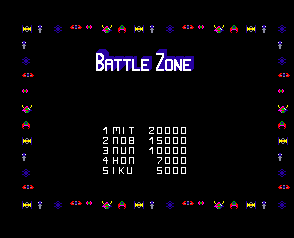

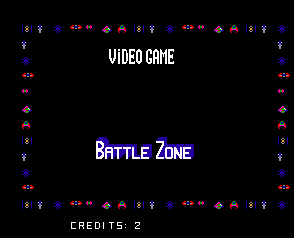
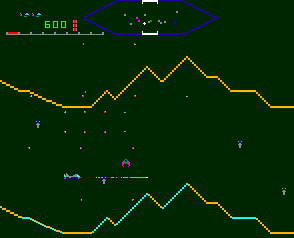
There is a bootleg of Satan of Saturn by ‘Inder’ too this one is interesting in that it has an extra ROM mapped above the ROM space of the original game containing extra code. I’m not sure if it’s just based on a later bugfixed revision of the original game, or if these mods were added entirely by Inder because I can’t really see much difference in the gameplay. It’s definitely one for somebody to pull apart and investigate.
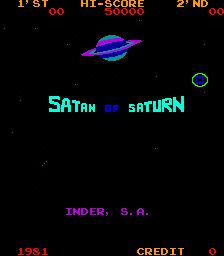
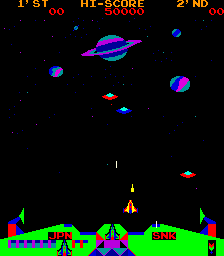
The version of Asteroids called Aerolitos is another interesting one. If you run it set to English language you’re not going to notice a real difference, but when set to Spanish it actually has a different translation of the text compared to the official sets. It seems to have been adapted to be more suited to the actual Spanish market, rather than Spanish as spoken outside of Spain. The Aeroliots version is shown on thop here

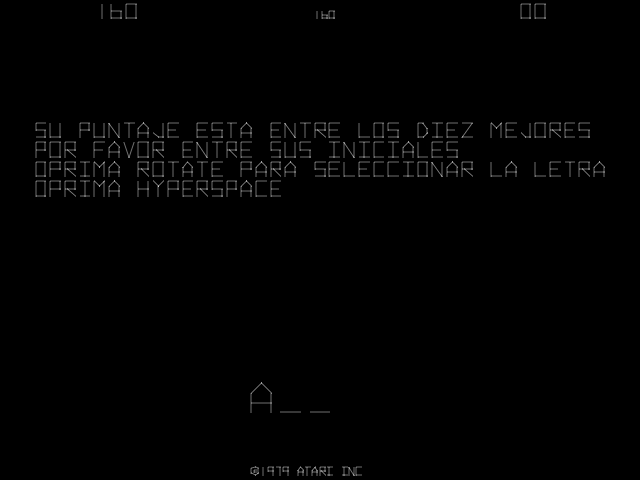
Operamatic did a version of Crazy Climber. This bootleg runs with fully decrypted code and numerous graphical replacements as well as translations of the text.
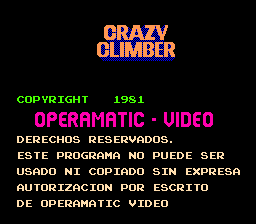
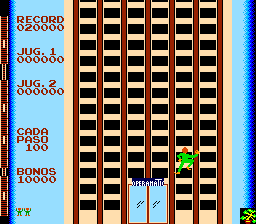
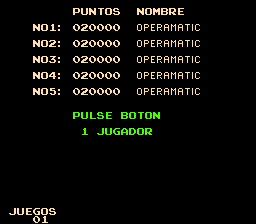
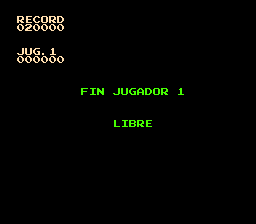
There is a Scramble bootleg on Galaxian hardware by Ruben S.A. too, interesting mostly for the different music it plays when you start a game. Maybe some Spanish readers remember hearing that tune in the arcades?
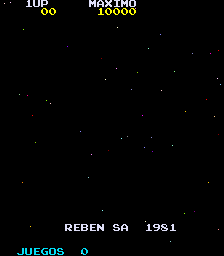
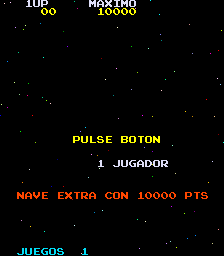
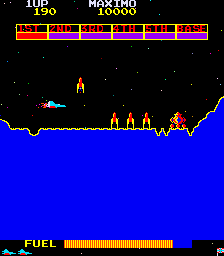
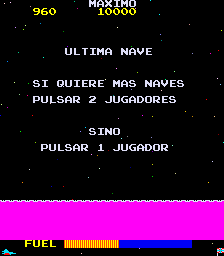
Another bootleg of Scramble called Impacto was also dumped, this one being much closer to the original hardware and the French bootlegs by Karateko etc.



One I’ve not quite finished yet (still need to fix the sprites, and see if there is a colour PROM that is more suitable because it wasn’t dumped) is an interesting bootleg of Guttang Gottong (Locomotion) on Galaxian type hardware. This is another where the sound / music has been redone (listen here) to fit the significantly inferior hardware of the bootleg. The original game actually had a dedicated audio CPU, to fit it in here they’ve actually had to hook up a bankswitch of one of the roms on the board just to have enough space to fit the new sound and sound player in! I was hoping this might spell out some more of the mystery of why the existing bootlegs of Locomotion seem to be based on such a different version of the game (with less fancy fonts etc.) but clearly this bootleg is just made from whatever the original source of those were, rather than being an earlier evolution. Fingers crossed I’ll find a moment to finish this off during this next cycle
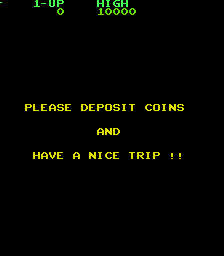
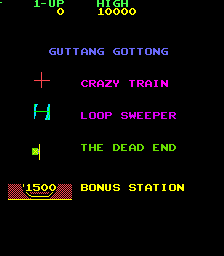
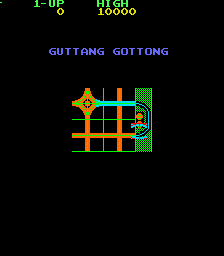
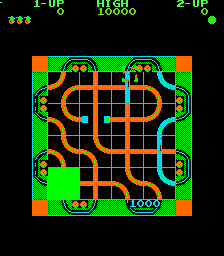
More by the numbers is a bootleg of Moon Cresta by Laguna S.A. I’m not sure if this is meant to use the original Nichibutsu graphics, but it’s a fairly standard bootleg, Spanish translation, exceptional only in that it seems to have either a bug or intentional protection check added, causing the game to reset on the 3rd enemy type if a bit read from a port (usually P2 cocktail mode fire button) is not correct. The same code that crashes the game is patched out in several other bootlegs.




There was also another UniWar S bootleg, very close to the ‘Ataque Sideral’ version called ‘Pajaro del Espacio’ a very literal name.




Beyond this the Spanish guys dumped a bootleg of Mysterious Stones on an Itisa manufactured PCB, but the only difference is 2 bytes (no visible change) and a (not Spanish) Borderline clone on a Tranquilizer Gun PCB, unfortunately with a dead ROM. A Spanish Mikie board was also dumped, but turned out to have identical ROM content to the regular versions.
Information from the Spanish guys was not limited to providing dumps of new clones, other Spanish games got some attention too. The game ‘Speed Ball’ is a Spanish developed Video Pinball. Thanks to being shown some flyers for the game it became apparent that it was distributed in several cabinet types, including one known as the ‘Super Pinball’ cabinet, made by Rumatic. The Super Pinball cabinet had several 7-seg displays for the score, bonus and balls, just like a real Pinball. Speed Ball has been emulated for a long time, but the 7-segs hadn’t been, so with the newfound information hap managed to get them working in MAME
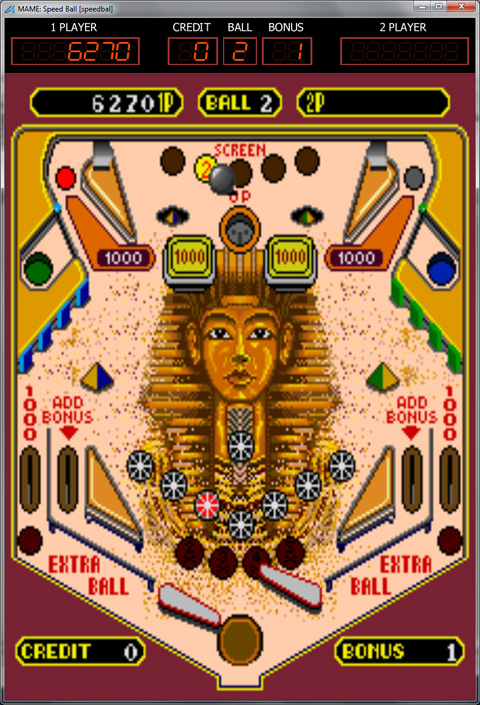
Speed Ball actually came into focus for another reason however. There is another game, previously undumped, running on the same hardware. The other game is known as Music Ball and is basically the same game but with 3 different tables, and a new theme. It was meant to have been released at the same time, but history seems to indicate there were some problems with getting it out the door.
One of the AUMAP users owns a PCB of the game, it appears to be an ‘original’ production in that it is an original Tecfri board, complete with encrypted z80 epoxy block for security. What is strange however is that his board shows no copyrights, has a blank space where you’d expect the title to be, and the rom labels are of the type Tecfri typically used when making bootlegs, not original games. Add to this that the flyers for the game actually show Speed Ball running in the Music Ball cabinet and the picture certainly gets muddy.
I was hoping that emulation could clear a few things up, show the evolution of the code, but unfortunately the encryption provided by the security module isn’t actually terrible. A few observations can be made from the graphic roms however. The roms do contain ‘Music Ball’ tiles (but not Sprites) and logos for DESystem and Rumatic. There are no Tecfri logos present in the roms at all, and the Speed Ball sprite tiles are still fully intact. This makes me wonder if Tecfri actually made the games at all, or if they licensed them from DESystem, and there was a breakdown in that process. Either way, I can’t show you emulation shots of Music Ball just yet, although I haven’t given up!
So that’s all things Spanish covered for this update, they’ve certainly been eating into my time a bit, but I don’t mind, because I do think it’s important MAME documents history from all around the world, and it’s clear that Spanish arcades have an interesting past!
Other improvements include Stunt Air looking and sounding a bit better (recordings of the sound were provided from the PCB, although no actual measurements could be made so it’s hand-tuned by hap) It’s probably a good time to give this one a whizz if you were holding off due to the more obvious imperfections in the last u update.
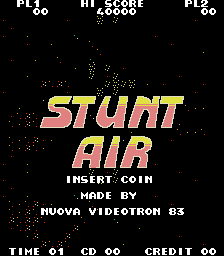
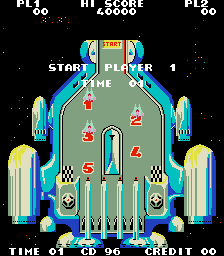
Switching focus over to the home systems there is one very significant improvement in 0.149, the .dsk file support has been restored to its former working state, and now handles the majority of ‘normal’ disk images properly (it still lacks support for the protected images, but that can come later) What this means is that a much larger amount of the Amstrad CPC disc library works again (and I’d guess Spectrum too, but there aren’t many .dsk files listed there) This should aid greatly in cleaning up that Software List as most of the software can now be launched again! I consider this progress because it’s now fully using the new floppy emulation without the issues that the transition had previously caused. If you go back far enough (over a year, maybe 2) you can find equivalent functionality, but it pains me to recommend such old versions when the projects have moved so far forward in other areas in that time.
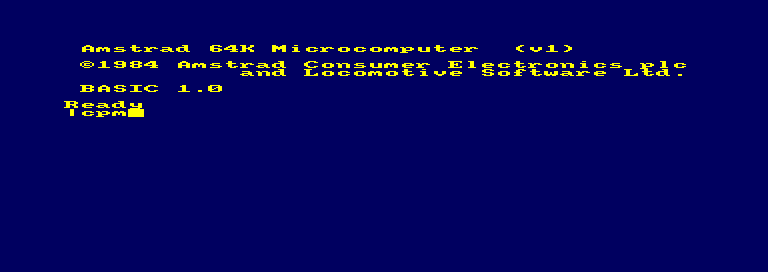
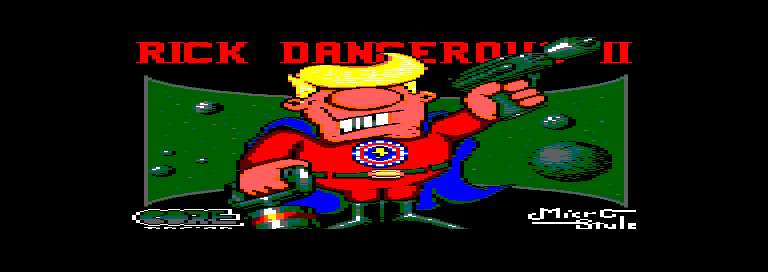
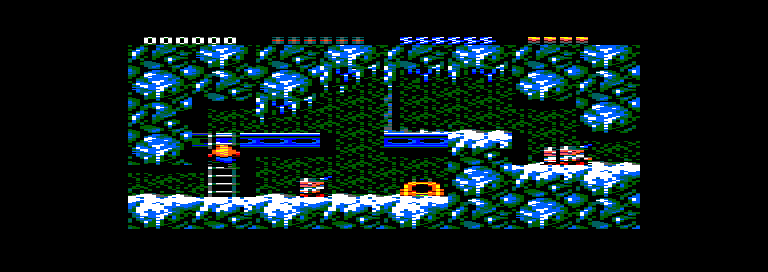
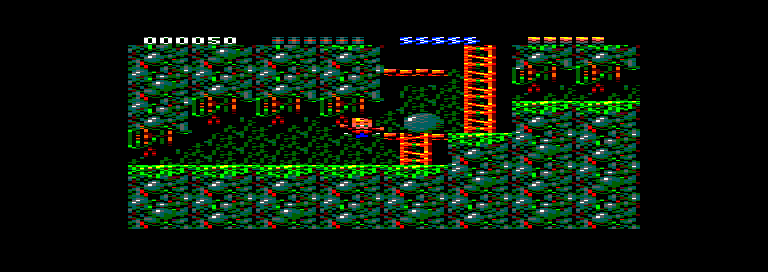
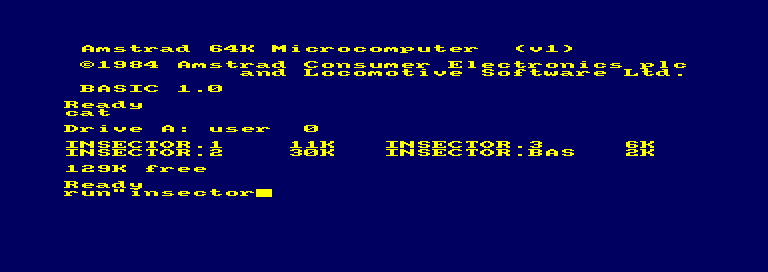
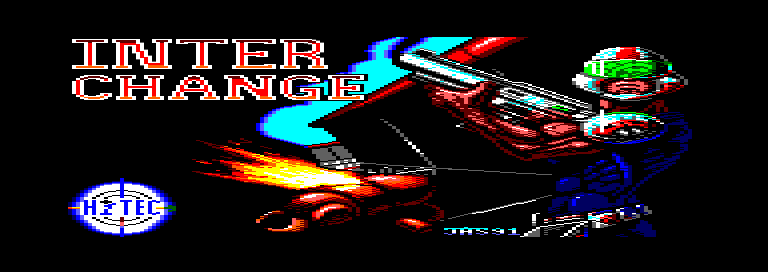
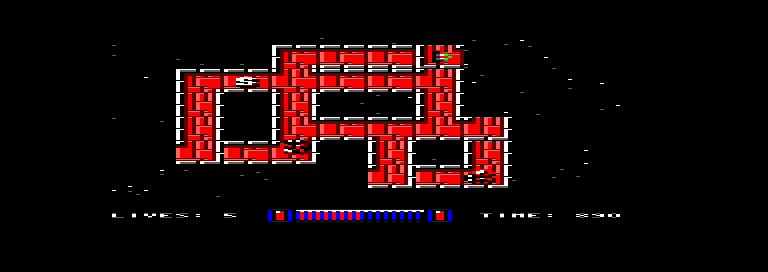
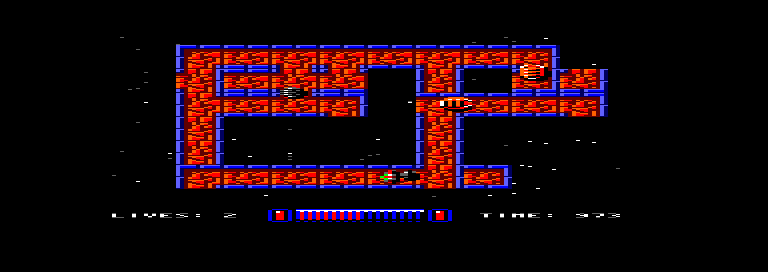
0.149 also continues down the line of providing vastly improved Save State support for many of the popular home systems (see the actual whatsnew for some details) This in turn makes MESS/UME a more attractive / usable emulator for those systems, never a bad thing!
Back to the arcades, there was another rare DECO Cassette supported, the ’18 Challenge’ version of Pro Golf, which is a newer version of the game I believe.
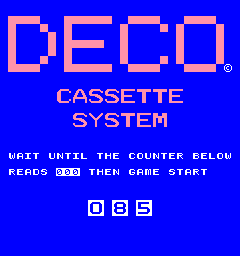
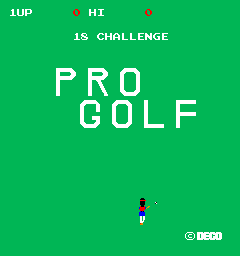
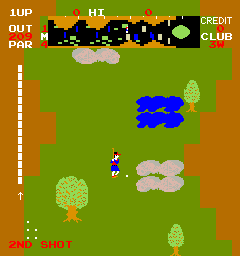
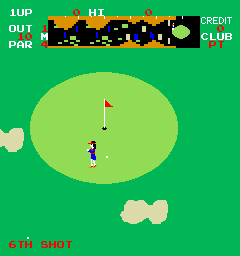
While talking about games with countdown screens I should also mention the work done to the Seibu SPI driver. Previously the driver used a hack to bypass the region protection. We believe the protection to be handled with the Flash ROMs on the motherboard, with the first byte of the Flash ROM being factory programmed to the board region. In order for a game to be flashed onto the board the region stored in the cart Program ROM must match the byte stored in the motherboard Flash ROM, or it will refuse to accept it. With the hack before this didn’t matter, but MAME will now load / require a ‘blank’ Flash ROM for each game, programmed only with the correct region, just like the Motherboard is believed to have. What this does mean however is that if you quit or reset MAME *during* the flashing process you will render the set unusable unless you clear out the files from your nvram folder. (that has scary implications for the real hardware mind you!) Just a warning that you should be careful anyway because without the hack it’s a lot more fragile ;-)
HLSL has seen improvements over the course of the cycle too, and despite a bit of a tantrum from the developer it remains present in the 0.149 release. It’s sometimes easy to forget that there were vector games outside of the arcades, but fans of home systems like the Vectrex will be glad to know that because MESS is really just a part of MAME / UME the improvements apply every bit as much there as they do to any arcade games in the baseline MAME builds. It would be all too easy to overlook the changes here, so I’m putting some nice big screenshots up, complete with the overlays.
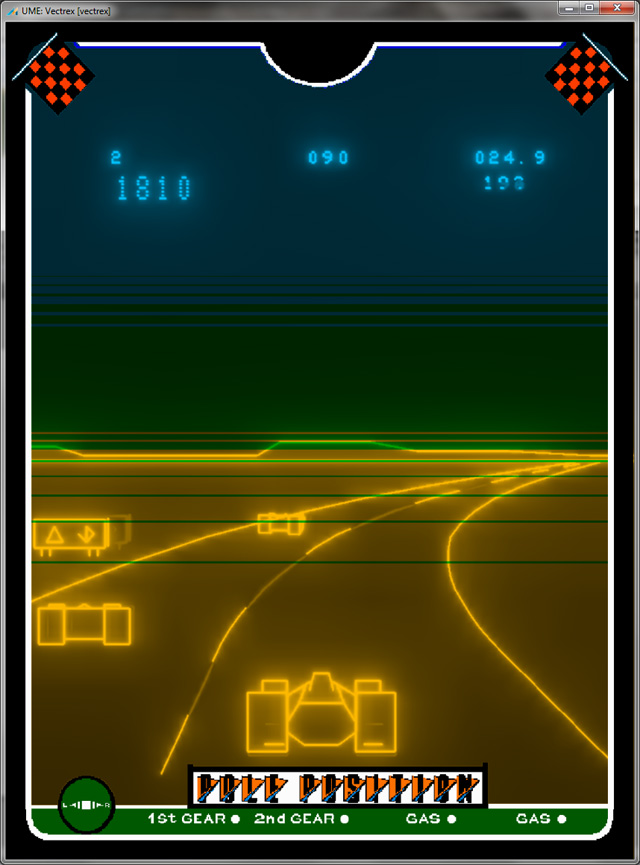
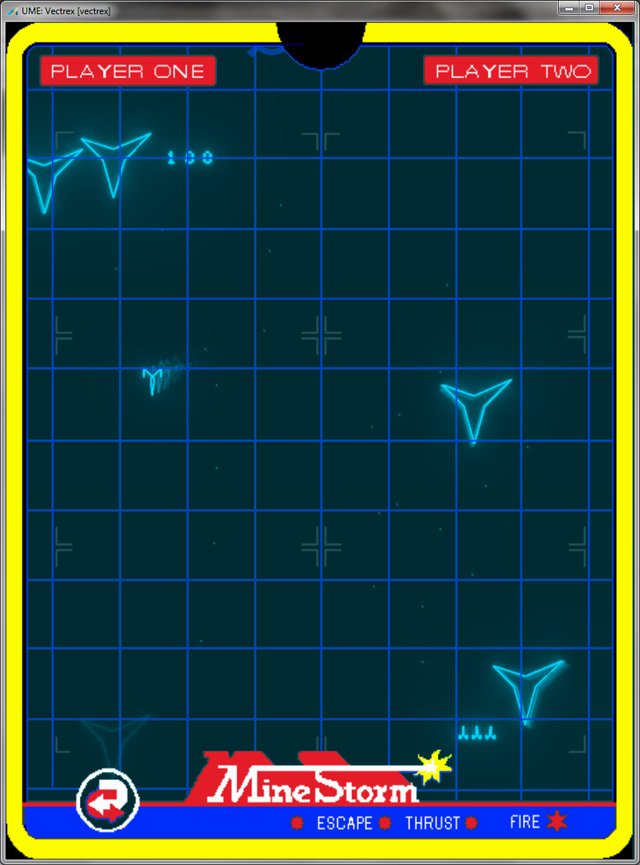
I’ve mentioned in previous updates that it’s sometimes easy to overlook simple softlist additions because they don’t really connect directly to the improvement of individual system emulations in the changelogs, but once again I’m going to highlight one that caught my eye.
Last year a company called ‘1985Alternativo’ put out (in physical form) a remake of the classic 8-bit game ‘Oh Mummy’ on the Genesis. This was a decent looking remake of the game, including both a ‘new’ mode and a ‘classic’ mode which attempted to look and play exactly like the Amstrad CPC original. This year, after selling out of the physical copies the company behind the game decided to make their creation free to download for all emulation fans etc. To me that’s a fantastic way of doing business, make your money selling the physical versions to people who want them and want to use them on original systems or collect them as a rare item etc. but then allow everybody else to enjoy your creation too.
Needless to say, this also means that the game is also now referenced in the MESS Softlists, and appears to run just fine.
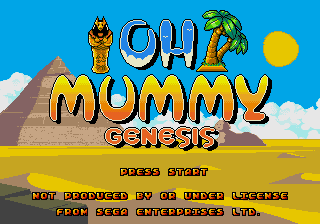
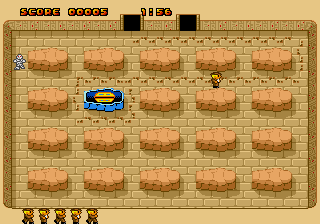
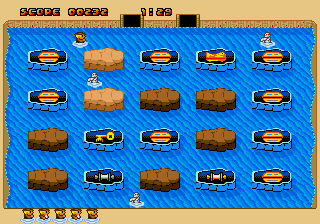
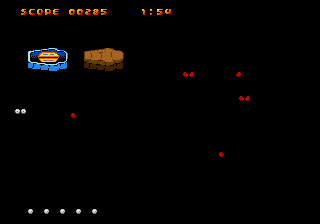
The ‘Classic’ mode in the Genesis release is shown below

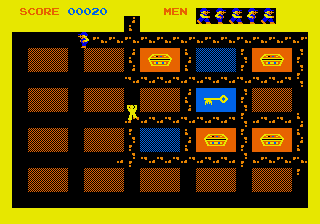
Of course the great thing about UME is that you can effortlessly run the CPC original in the same emulator for comparison, how exceptionally cool is that!
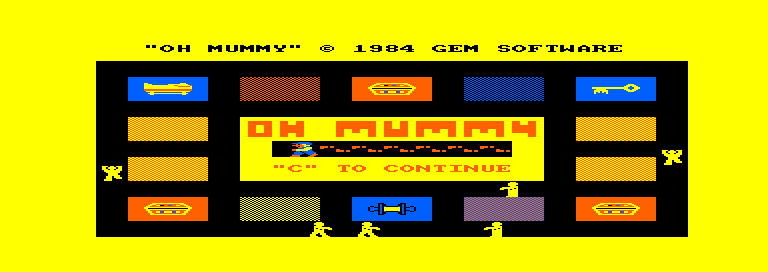
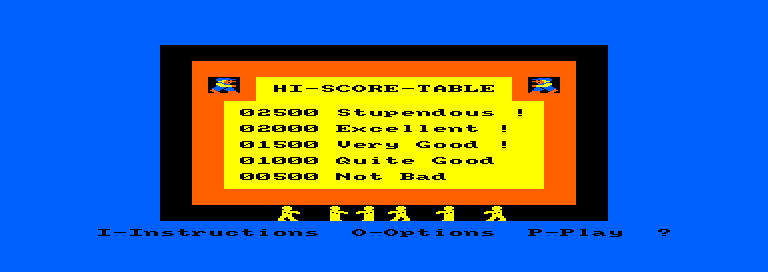
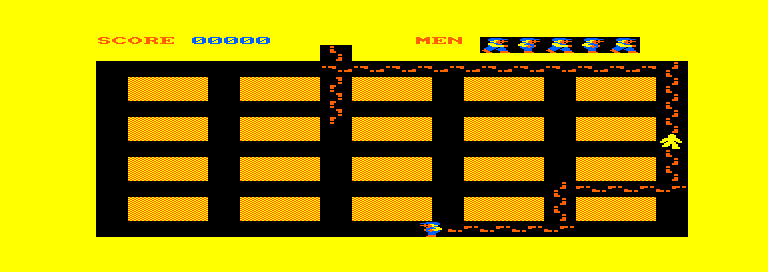

The ZX Spectrum version can also be used in UME (although isn’t in the Softlists yet) although I couldn’t get the MSX disk version to run (also not in the Softlists yet)
Long long time with mame/mess cosmetic changes..
Nice to see Attack Force finally found and preserved!
That MineStorm brings back memories.
Haze, could you ask people to report any games with non-working save states for the consoles that I marked as supporting save?
thanks
well.. you’re assuming anybody is going to use MESS / UME for those systems still ;-)
In all seriousness I don’t think simply asking people to ‘test them’ is going to result in any more than you could test yourself (assuming you tested at all) the real test is simply going to come from people actually using them during normal use, and the bitching if they fail ;) Keep in mind that a simple load / restore state from similar situations is going to make it less obvious if some things aren’t being saved properly (vram tiles etc.)
the best test for states is of course if a -state x from the commandline can restore you from nothing to a fully working position in the game..
Yeah, I always test states from at least 2 different levels with different BGs/musics/etc. It’s usually not hard to do and exposes many problems.
Last time I used savestates for anything was with the seibuspi driver which didn’t restore the instrument set for the currently playing music correctly. Had issues compiling MESS the other day but next time I’m toying around that area I’ll look into the GBA among other popular devices for savestates.
That’s odd, the instrument set should be the flashrom on SPI.
Checked again today from SVN and it seems the instrument sets did keep in savestates after all. Must’ve been a LOT longer back than I thought when the instruments weren’t being saved correctly.
Now if only the reason for some sounds/instruments not playing at all could be found, and then some volume tweaking afterwards, we’d have like 100% accurate audio.
Anyone notice that Alt-Tabbing out of MAME to anything else when HLSL is turned on causes MAME to stop rendering to the screen?
Yeah, it happens on my machines only when I’m running Fullscreen.
Windowed mode is fine though.
about save states, I have tested a dozen of game for each platform I added save states to, usually getting to the 3rd level and saving: 1. at start before title screen, 2. at title screen, 3. at menus if any, 4-9. in at least 2 places per level
and then I closed MESS and restarted it ensuring everything was fine when reloading each of the saves. is that enough testing by your standards, Haze?
for sure, it gave results: that’s how I had found that GBA was not saving video at all, despite having been tagged as supporting saves by JD years ago (SMA was not restoring the menu if you went to gameplay and then back) and it allowed me to fix that.
also, I have had Kaylee and a few friends testing other games in the same way and they found none failing to restore, neither for gameboy, nor for snes, nor for lynx and the others
still, despite these tests, as soon as I publicly asked for people to report issues, a guy reported at MESS boards that Gargoyle’s Quest 2 does not restore gfx correctly (I’m looking into that) and there is another NES games which seems to have issue as well (same mapper so it’s probably the same issue, despite 3 other games using it not having issues with saves/restore) , but even 5 persons cannot perform extensive tests by themselves when a system has thousands of games
given that in the past a lot of “saves don’t work” reports had been discarded because drivers were not supporting saves, maybe a lot of users just concluded save issues are not to be reported and that’s why I had asked you to simply advertise that *now* we are interested into reports about the new feature for these system
That sounds like a decent level of testing, and it sounds like some people even found bugs.
I’ve made my points before, if you want it more mainstream, with wider testing, just make MAME = UME style and you include a wider userbase by default as one of the many, many benefits.
The team has, for now, rejected that idea, even if you’re still letting this ‘must keep code split apart at all costs’ dictate your work to the point of not yet even providing slot support in PC10 because it might mean you have to compile some ‘unneeded’ console code in for mappers MAME doesn’t use directly; oh the shock, the horror! It’s utterly bonkers from my point of view.
I maintain the best way people are going to find bugs is through normal use of the driver because it isn’t at all obvious from just looking at what’s running if something has done some kind of weird banking, or enabling something that might not restore.. With no knowledge of the code / mappers etc. you’d be testing ‘blind’ so a developer, who knows what fancy mappers have fancy code is in a better position to do the basic testing and highlight likely worthwhile test cases. If you’re not even confident about the basic ‘mapper 0’ state code then it’s probably a bit early to be asking people to do testing so at the very least a decent list of games that use fancy mappers and need more testing would be good.
your final observation would make more sense if I had asked about NES only, but it’s not really true with snes, megadriv, lynx, sms, gamegear, gameboy, wonderswan & neogeo pocket (+color versions), where there is maybe a dozen of games requiring particular knowledge over hundreds/thousands of supported items in the list
also, I don’t get all your emphasis on “normal use”… all I was asking was you to make more clear that now we accept save/restore reports for all those system. maybe people would be encouraged to test the actual emulation, instead of presuming it’s bad a priori, and they would include some save/restore attempt in their normal use :)
that’s all I was expecting, not any kind of dedicated effort…
p.s. the reported bug for NES has been fixed too, which will make u1 even better for save states, but the other systems have still to be found faulty :)
So I think your testing is sufficient for those cases
If one basic case works on something like the genesis and can restore you from nothing to fully working with correct graphics and sound, then you’re honestly probably ok, there is very little variation to consider.
I talked about the NES because it’s a more complex case.
I can ask more people to test, but I just think it’s crazy when you could have more testers by default just by giving the code to more people by default and cut me out of the equation! I already mentioned that a wide range of drivers now officially support states “0.149 also continues down the line of providing vastly improved Save State support for many of the popular home systems (see the actual whatsnew for some details)” so I think it’s implied that I’m saying things are much better now and that people should be trying them out? I could list the systems, but I think it’s one case where pointing people at the whatsnew makes more sense because it isn’t a very ‘visual’ thing.
I don’t agree completely, but your blog your choice. If there are lingering bugs, at some point they will be caught and reported.
in a sense I find amusing that, after you stated repeatedly on the shoutbox that lack of robust saving was a major blocking issue stopping people from using MESS/UME for popular 8/16 bit consoles, their addition is now worth 2 lines of news… maybe it was not such a major issue?
in the end, anyway, I don’t care so much.
Most of the changes I do (except a few on friends’ requests, like save state renaming and famicom multitap) are done so to make MESS *my* emulator of choice for a given system.
Save states make simpler for me to finish games, and for users to report bugs happening at later stages. Family BASIC tapes (added for u1) allow me to test some obscure games I was curious about. Family Trainer support (added for u1) allows me to finally see in action the two Takeshi’s Castle games produced for that peripheral. and so on…
If there are other users enjoying the addition (and from the PM I’ve received there are quite many) I’m even happier, but the core motivation remains to satisfy my own emulation needs ;)
Hi Haze! Fantastic work. Many thanks for your great work you are doing. I admire your work. Sorry for bad English.
In 2005, I stopped to watch for the development of the emulator Mame.
And now I decided to remember and am a little confused. 28000 rum and, moreover, most of the fruit and mechanical games that does not work. Because such a large number of Roms, no assembly emulators do not work quickly. Why not add them later when they will be able to earn?
In what has become my favorite emulator?
Do not know whether to tell you or not but it is very important to know what you think. I am interested in your opinion. Why not make a separate branch of the emulator which will be collected only all the gambling and casinos, mechanical and fruit? leaving only a pinball. I understand it was a lot of work on these games but agree to most of those who are interested in emulation of gambling are in last place. The emulator would work more quickly and is made for those who are interested in the games that we played as a child. I nostalgically remember those great times. Thanks to you, I have the opportunity once again to play your favorite games.
What you are doing is a masterpiece. Thanks again for your work and good luck to you.
MAME is not a popularity contest.
I know the fruit machines aren’t the most popular, but they’ll work eventually, and it’s no different to having non-working PC based games etc.
There is no reason to have separate branches, it will only make it look like we care for such things less, it is important that MAME share the message that we consider progress in all areas to be of equal importance.
It is VERY important that these fruit machines get emulated properly, so anything that would give the wrong message should be avoided.
Your post was probably the more polite of some of the ones people have tried to post in the last few days. A change was made in SVN to allow builds with / without them, and as a result I’ve simply not bothered forwarding a number of ‘FUCK YOU HAZE FINALLY YOUR FRUIT MACHINES ARE GONE!’ type messages… Unfortunately I do think that even the change that was made is starting to send out the wrong message, we should be presenting a unified front and making it clear that all arcade games are considered equal. I’d actually quite like it if Micko adjusted the trademark rules so that any builds presenting a reduced list can’t use the MAME trademark although I suspect that will only happen if people start distributing reduced builds that aren’t really the full MAME as ‘MAME’ without disclosing modifications properly.
Like I said at the start, MAME should not be a popularity contest, there are a lot of things we’ve emulated that are complete trash, but that’s all part of what makes MAME what it is. Them being non-working sets (many can be run anyway) has no bearing on matters either, it’s always been a project about encouraging development and giving to the public *everything* we know, so that they can contribute back.
The MAME philosophy should be one of ‘because we can’ much like the MESS one always has been, the fruit machines help show that philosophy.
This is an important message to send out, especially to developers as they can work in confidence in the projects, knowing that whatever they contribute will be considered as an important and equal part of what MAME is, and isn’t going to end up ejected or suddenly not cared for on a whim. MAME is about the preservation of all our arcade history, including these machines, and if you include MESS too then it’s simply a project about our computing history as a whole.
None of this makes for a worse experience when running your classic arcade games, so it should really be a non-issue.
If only haze be as passionate programmer for mame as he write bla bla bla…
While you’re obviously trolling because I haven’t worked on something you wanted worked on I guess I should at least point out a few things.
First off, I am still working on MAME, even simple additions like the Spanish clones take time, especially if you’re also trying to work with the community and explain a few things as you go. They’re not interesting to most of the world, but they are interesting in terms of showing / documenting history, and sometimes looking at the modifications present.
Secondly, as stated many times, many of the easy things are done, I can spent hours looking at a problem only to have nothing to show these days; even what should be easy targets often turn out to be tricky.
Thirdly, it’s really about time a new generation sprung up and made progress where we’re failing to do so. That’s what happened in the past, where one set of developers had ran out of ideas a new one came along with fresh ideas for how to solve the problems. Some of the better known MAME developers were really only working on MAME for a short space of time, I’ve probably been working on it for 15 years now, in cases where I’m out of ideas, I’m truly out of ideas!
For the reason above part of the work I do is also ‘selling’ what MAME is today to people, explaining how as a project it has a future, even if arcades themselves are dead and forgotten for a long time now. Articles like the one here (although I really should finish it and add information on some of the smaller MESS developments) are designed to show people that there is plenty of life left in the project, and plenty of new territory to explore, things people haven’t understood before etc. It is also important to get the message out to everybody so they know their contributions are welcome. There are too many people who seem to think as a project this was finished years ago, and you don’t need anything newer than a 10 year old build, that’s wrong because significant improvements are happening all the time. Again talking about the Spanish additions it was important (IMHO) to make the community realise we do actually care about what they have to offer, there were boards just sitting there undumped presumably because they didn’t think MAME would be all that interested when really we are, because we’re interested in everything be it traditional arcade video games, casino style arcade games, non-video arcade games (fruit machines etc.) or even home systems and miscellaneous electronics. It’s also especially important to have cases which show some local history like this! That message clearly isn’t fully ‘out there’ yet.
So if Raiden 2 still doesn’t work ‘bla bla bla’ then maybe some new people should actually step up and make it work instead of just taking the existing team for granted and expecting us to work miracles.
MAME / MESS are also much more about reverse engineering and understanding as they are programming, simply being a programmer doesn’t buy you real progress which IMHO is one reason we’re not seeing as much progress on the difficult cases today anyway. This is also the reason so many official packages lift information / code straight from MAME rather than figuring things out themselves because even 30 years of programming experience and training doesn’t tell you a thing you need to know about reverse engineering how a piece of hardware works.
Coming from someone who nearly uses UME exclusively, I can honestly say that the advantages of the input system, the cheat engine, the renderer, and other things I take for granted far outweigh some trivial feature like save states. None the less, I’ll test save states on the systems that I use and report back when I can. The results might be surprising!
Ok, I’m back. Lots to report.
* General
Renderer has been updated and now -video d3d doesn’t work on i945g. Crappy old hardware must now use ddraw and that’s unfortunate. Also, this is NOT insigificant if the Mugen 1.1 leak was any indication.
* PSX
CDDA works again! Sort of. Ridge Racer plays music, but buffering time is really slow. Asuka 120% SBF doesn’t seem to play music at all, but I didn’t exactly give it a thorough test.
For shits and giggles I tested a save state on SFA3 and it worked! Incredible.
* PCE
New PCECD setup is a trainwreck. Random crashes, mega slow, epic audio delay, etc. Arcade card games are especially affected.
Tested a save state on Shockman and it worked.
* Megadriv
Tested a savestate on Shining Force II. Still broken. Missing a palette and sound system not reset.
Madden98 still broke. *Shrug*
* SegaCD
Unsurprisingly, I tested a save state and it crashed. lol
* NES
Tested a save state on Crystalis and it worked! Progression.
Game genie with slot support is hilarious and stackable, but alas, does not yet work with some (actual) games in the slot. I can’t wait to emulate the Sega Sandwich.
* SNES
Tested a save state and it almost worked. Black screen, but still functional.
* NGPC
Tested a save state on Gals Fighters and it worked. Progression.
NVRAM is still broken, so lucky that.
Link timeout glitch is fixed.
* SMS
Tested a save state on SF2 and it worked.
* GBA
Tested a save state on Aria of Sorrow and it worked great.
For some years now, there’s been this mysterious “Button 5” to which nothing can be bound. It’s harmless, but does it do anything?
* sf2m8
Now works, but buttons 4-6 are broke.
* Saturn
Seems to have regressed, but I can’t determine what the cause of the lockups is. Does “track mode 26” mean anything?
* 32X
I don’t even know when this regression occured because this system is a POS slug, but what the heck…
nbajamte, nflqb, swau, kolibri, wwfraw = doesn’t boot
vfju = makes hideous high pitch noise
What SNES game had the save state problem?
Saturn works the same as always here (tried several games, US and Japanese). “track mode 26” means your CD rip is bad.
I suggest to haze that he maintain an android version of UME :D, that would promote UME usage and also would be great to play old consoles with MAME/MESS source code in the background.
Muchas gracias por esos juegos en español amigo (Many thanks for that spanish games friend) (y)
26 is just the audio track number currently played.
@Arbee: I tested Art of Fighting 2. The result wasn’t really unexpected, so I didn’t test anything else.
Hi,
I’m unable to compile UME 0.149 on Ubuntu Linux 13.04.
/usr/usr/bin/ld/: /cannot findusr -lQtGuibin/
/binusr/bin/ld/ld:: cannot /findld: -lQtCore
cannotcannot find -lQtGui
/usr/bin/ld: collect2: error: ld returned 1 exit statuscannot
find -lQtCore
findcollect2: error: ld returned 1 exit status
-lQtGui
make: /*** [obj/sdl/build/makedep] Error 1usr/
bin/ld: make: *** Waiting for unfinished jobs….cannot
findmake: -*** [obj/sdl/build/file2str] Error 1
lQtCore
collect2: error: ld returned 1 exit status
make: *** [obj/sdl/build/makelist] Error 1
If I’m correct, Qt is only used for the debugger, right?
Small addendum – I have the Qt5 Ubuntu SDK installed (which is completely awesome, just wait until you see what you can do with QML), I’m guessing that might be related to the problem?
I’m not modifying anything related to the QT code, I imagine you’ll have the same problem compiling MAME or MESS unmodified so should probably discuss it on the official support channels :-) My experience of compiling the emulator on Linux is 0, so I wouldn’t even know where to begin with the suggestions on a fix myself.
It’s used for the debugger yes, I think there is a decent possibility the Windows version will also use the QT debugger in the future because it’s actually very mature at this point.
Pooosh: we (and qmc2) use Qt 4 right now (I think 4.8). Qt 5 is still somewhat unstable and not widely available in distributions; I expect we’ll look into upgrading later this year when Qt 5.1 is out and the next round of distros has shipped (starting with Fedora 19 a few days from now).